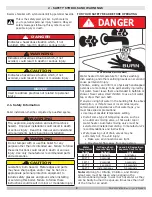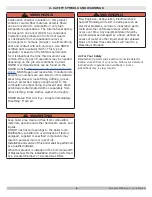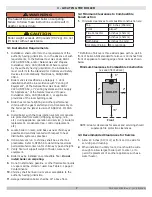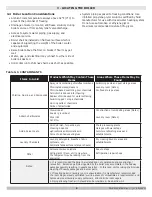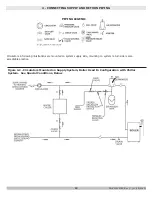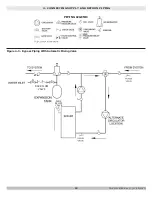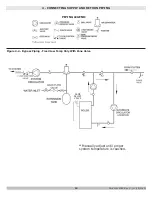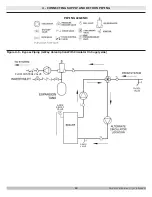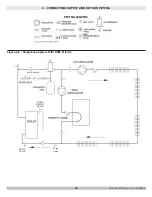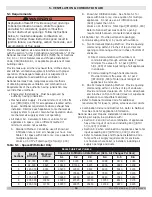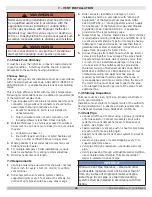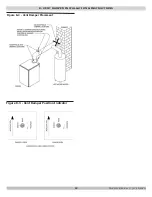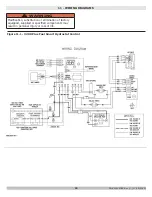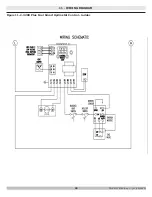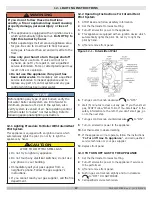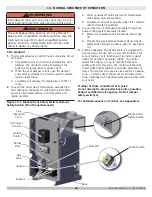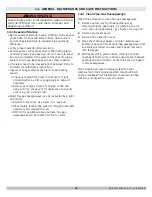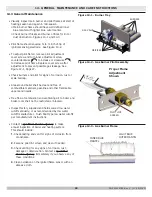
19
When an existing boiler is removed from a common venting
system, the system is likely too large for proper venting of
appliances still connected to it. If this occurs, follow this
test procedure:
6 - VENT SYSTEM MODIFICATION
At time of removal of an existing boiler, the following steps
shall be followed with each appliance remaining connected
to the common venting system placed in operation, while
the other appliances remaining connected to the common
venting system are not in operation.
1.
Seal an unused opening in the common venting
system.
2.
Visually inspect the venting system for proper size and
horizontal pitch and determine there is no blockage or
restriction, leakage, corrosion and other deficiencies
which could cause an unsafe condition.
3.
Insofar as is practical, close all building doors and
windows and all doors between the space in which the
appliances remaining connected to the common venting
system are located and other spaces of the building.
Turn on clothes dryers and any other appliance not
connected to the common venting system. Turn on
any exhaust fans, such as range hoods and bathroom
exhausts, so they operate at maximum speed. Do
not operate a summer exhaust fan. Close fireplace
dampers.
4.
Place in operation the appliance being inspected. Follow
the lighting instructions. Adjust thermostat so appliance
will operate continuously.
5.
Test for spillage at the draft hood relief opening after
5 minutes of main burner operation. Use the flame of
a match or candle, or smoke from a cigarette, cigar or
pipe.
6.
Minimum draft should be -.02" w.c.
7.
After it has been determined that each appliance
remaining connected to a common venting system
properly vents when tested as outlined above, return
doors, windows, exhaust fans, fireplace dampers and
any other gas burning appliances to their previous
condition of use.
8.
Any improper operation of the common venting system
should be corrected so the installation conforms with
the National Fuel gas Code, ANSI Z223.1/NFPA 54,
and/or the Natural Gas and Propane Installation Code,
CAN/CSA B149.1. When re-sizing any portion of the
common venting system, the common venting system
should be re-sized to approach the minimum size
determined using the appropriate tables in Chapter 13
of the National Fuel Gas Code, ANSI Z223.1/NFPA 54,
and/or the Natural Gas and Propane Installation Code,
CAN/CSA B149.1.
9.
Draft pressure must be negative under all conditions
with all aplliances operating.
6.1
Removal Of Existing Boiler From Venting System
Figure 6-1 -
Typical Masonry Chimney Requirements
See NFPA for Installation Specifications
Type B Vent Masonry Chimney Requirements
PN 240012785 Rev. C [11/15/2020]

